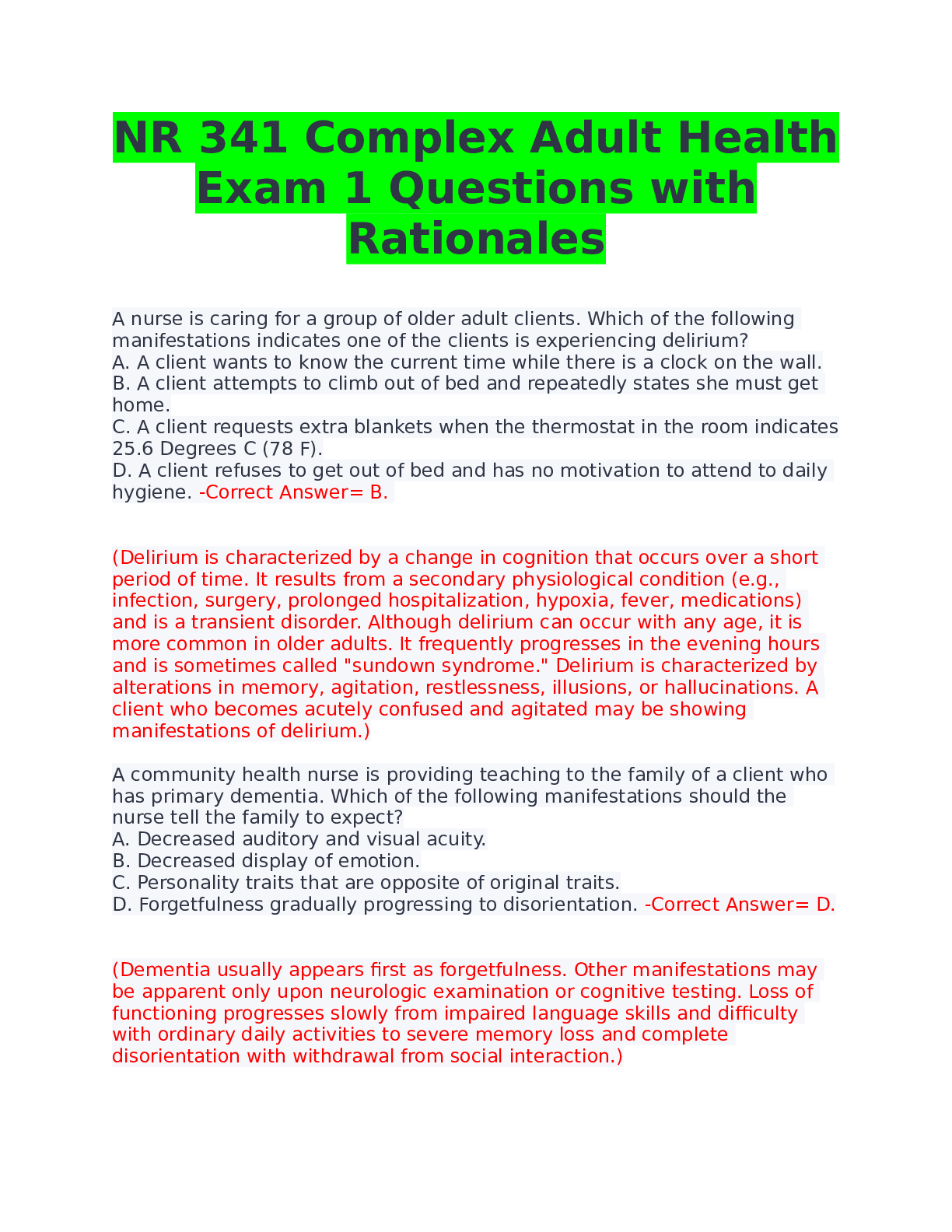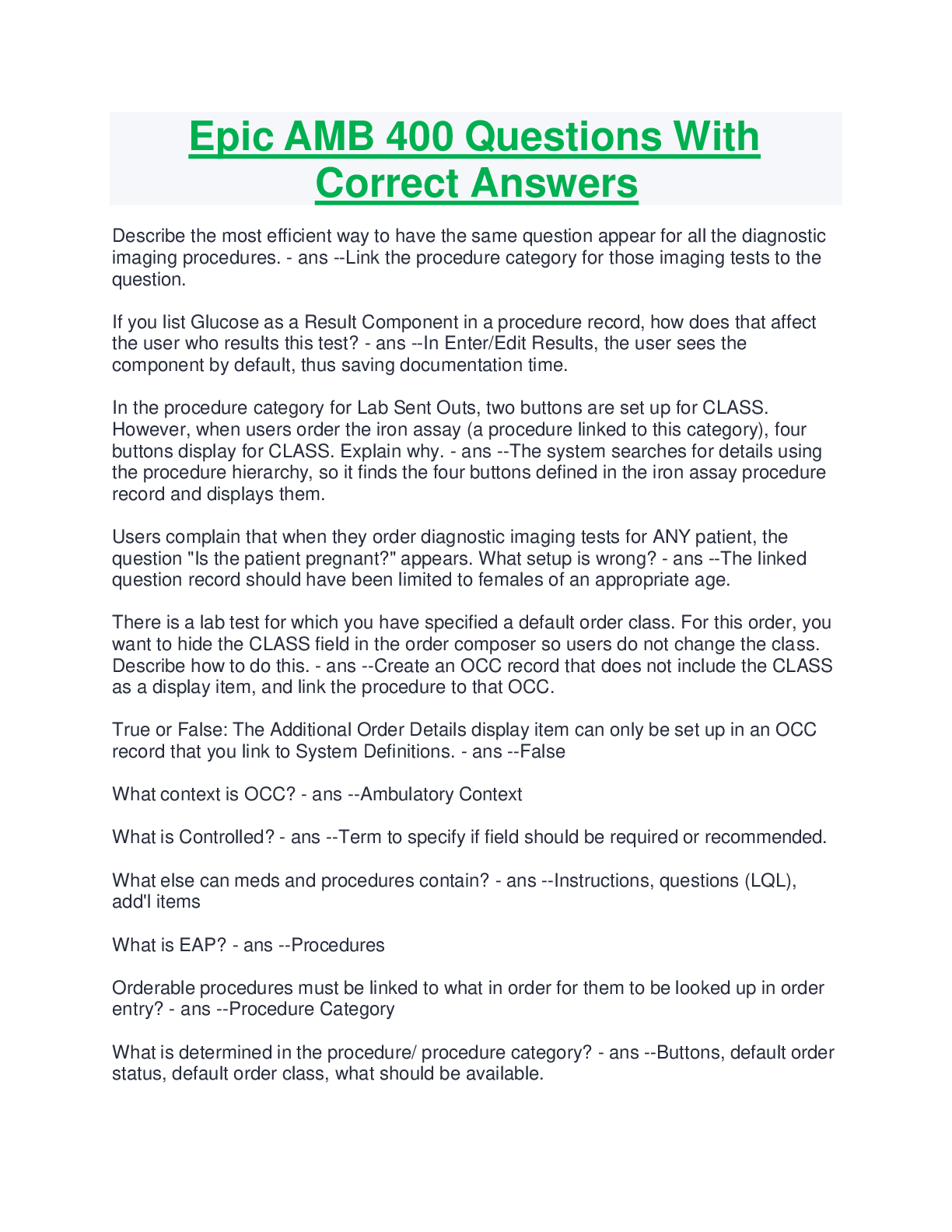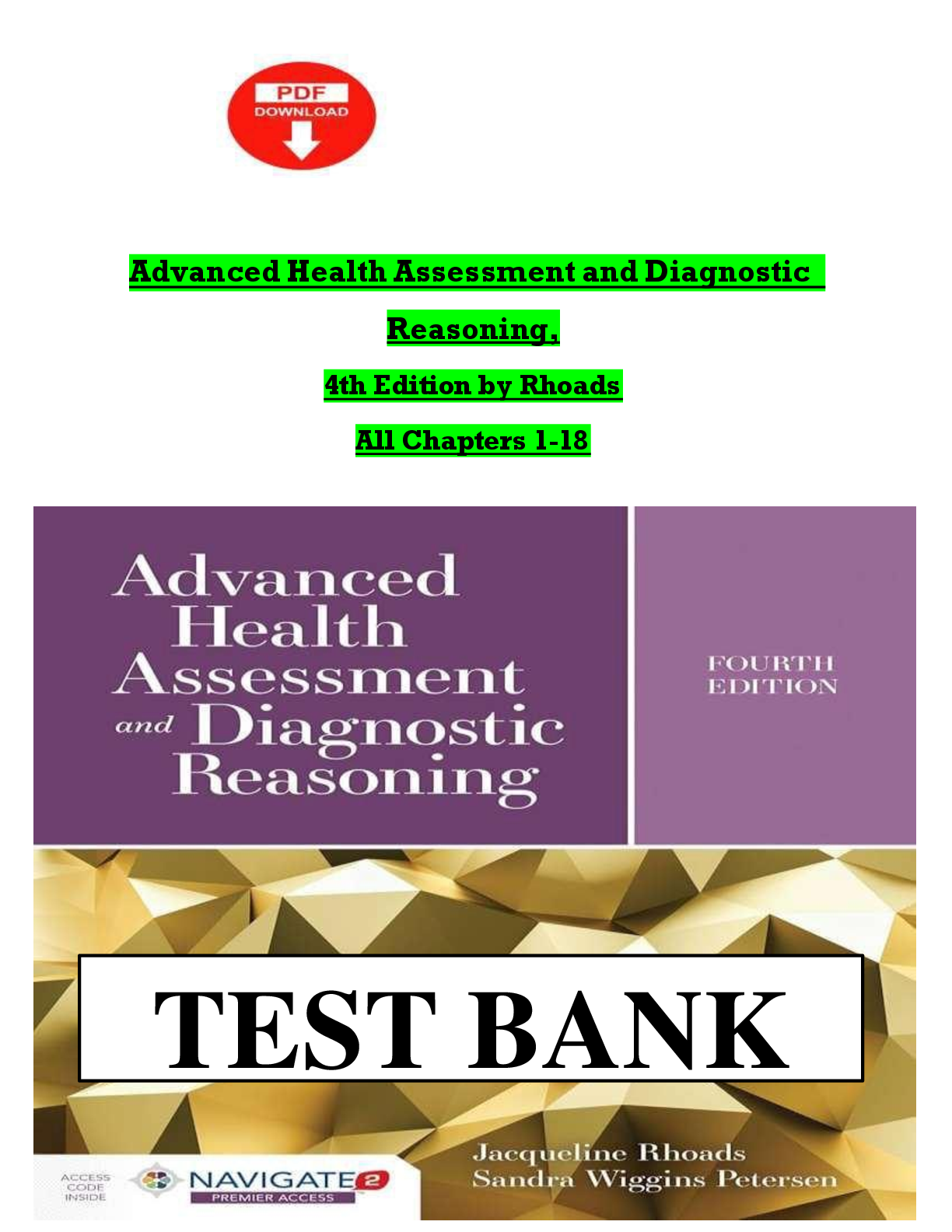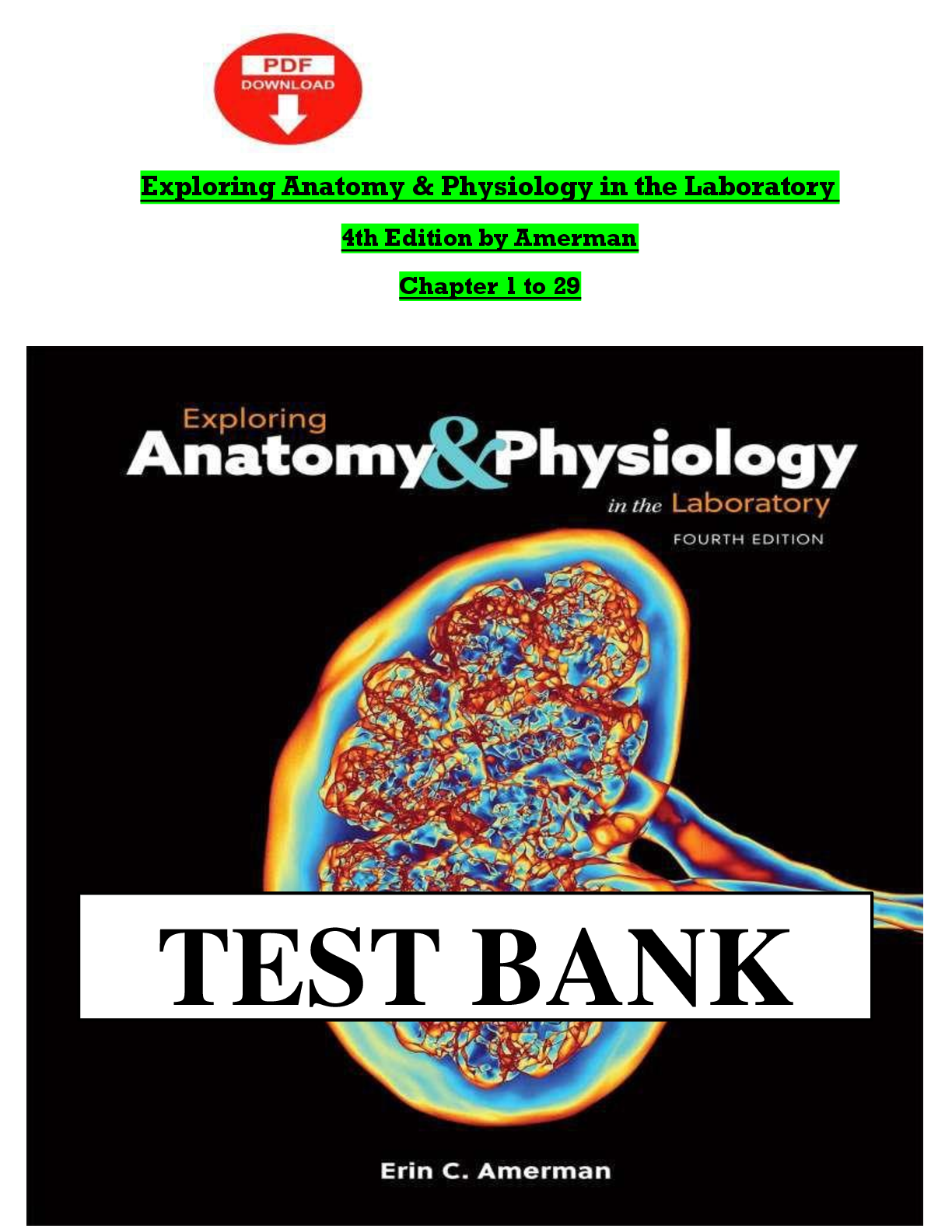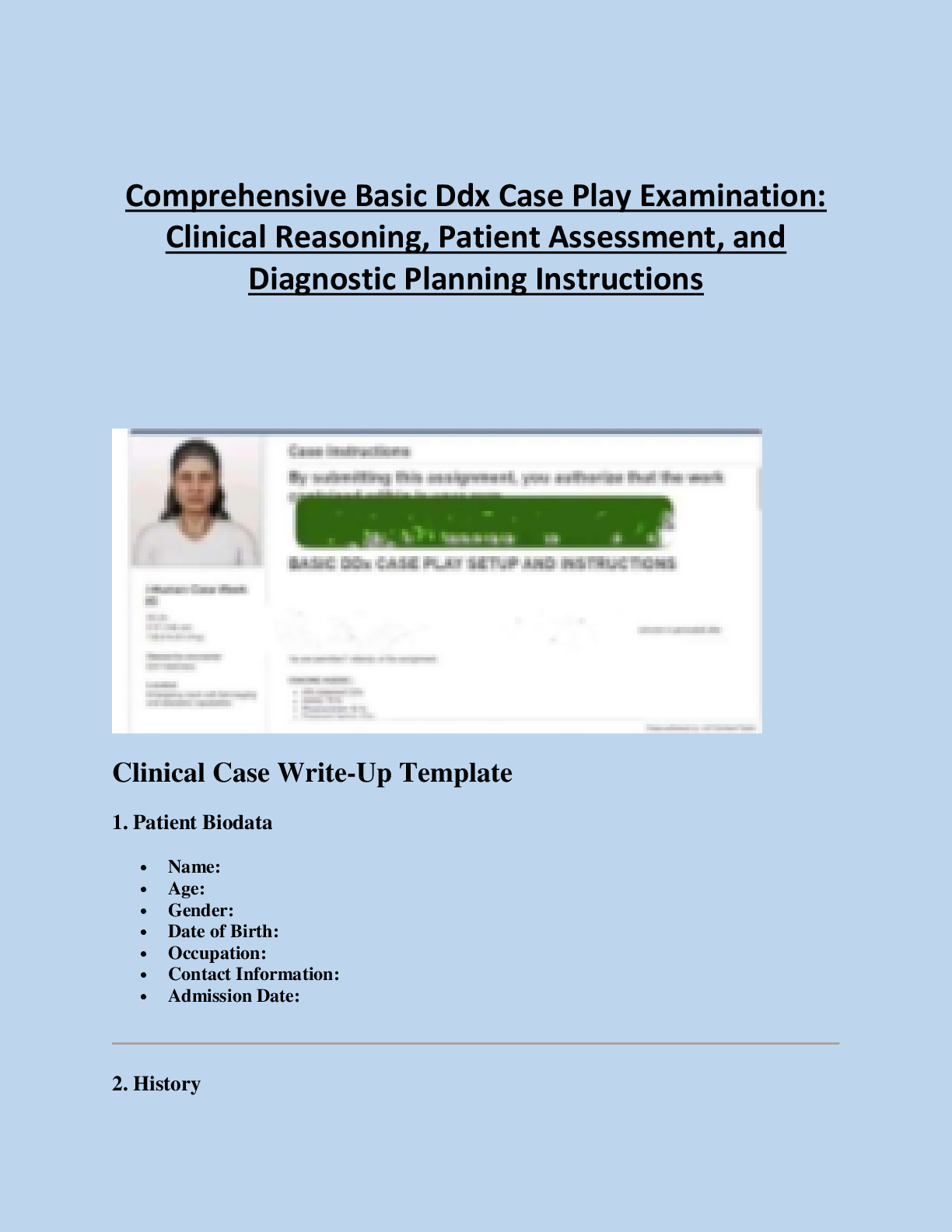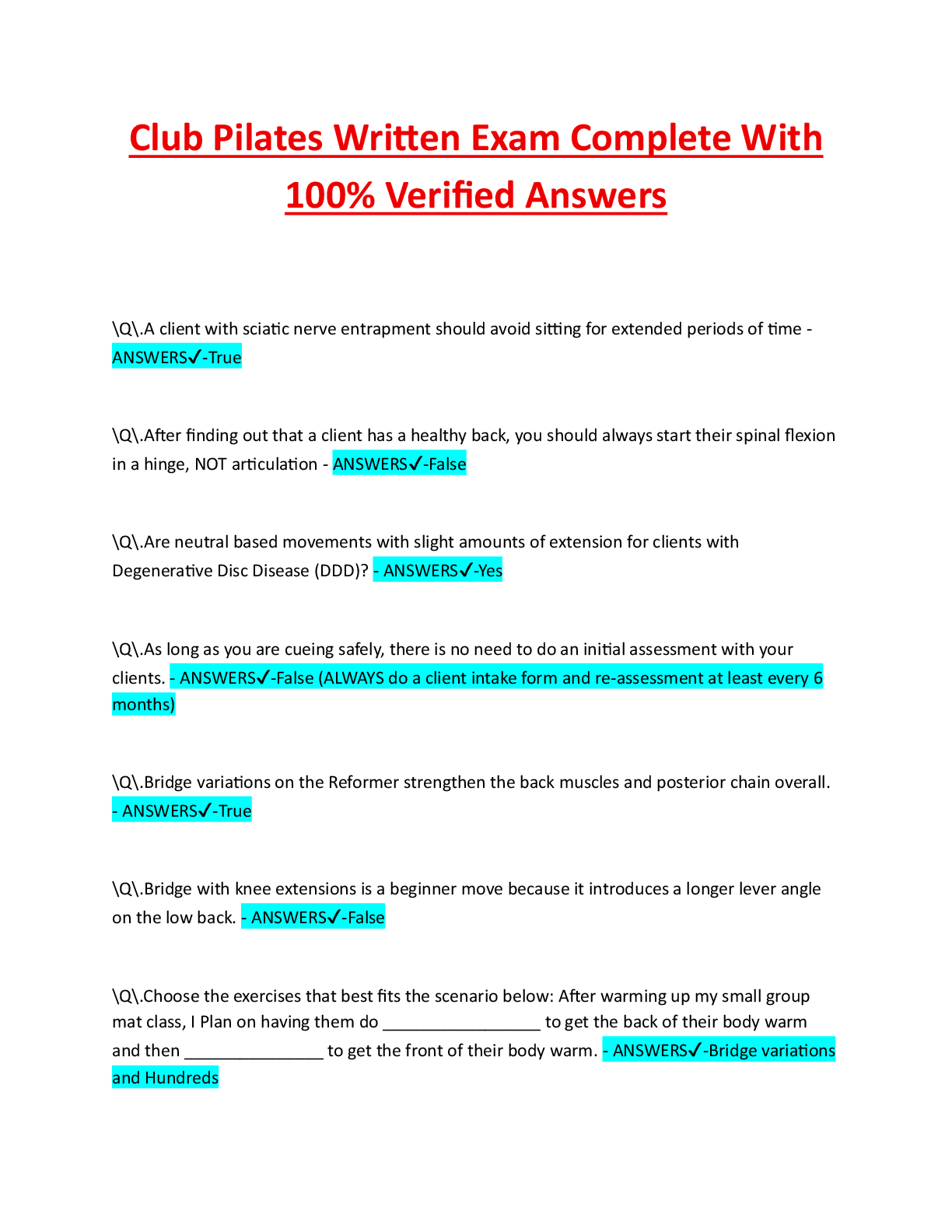*NURSING > A-Level Mark Scheme > Test Bank for Introduction to Maternity and Pediatric Nursing, 7th Edition (All)
Test Bank for Introduction to Maternity and Pediatric Nursing, 7th Edition
Document Content and Description Below
Test Bank for Introduction to Maternity and Pediatric Nursing, 7th Edition, GloriaLeifer, Table of Contents UNIT I: An Overview of Maternity and Pediatric Nursing 1. The Past, Present, and Future ... UNIT II: Maternal-Newborn Nursing and Women’s Health 2. Human Reproductive Anatomy and Physiology 3. Fetal Development 4. Prenatal Care and Adaptations to Pregnancy 5. Nursing Care of Women with Complications during Pregnancy 6. Nursing Care of Mother and Infant during Labor and Birth 7. Nursing Management of Pain during Labor and Birth 8. Nursing Care of Women with Complications during Labor and Birth 9. The Family after Birth 10. Nursing Care of Women with Complications Following Birth 11. The Nurse’s Role in Women’s Health Care 12. The Term Newborn 13. Preterm and Post-Term Newborns 14. The Newborn with a Perinatal Injury or Congenital Malformation UNIT III: The Growing Child and Family 15. An Overview of Growth, Development, and Nutrition 16. The Infant 17. The Toddler 18. The Preschool Child 19. The School-Age Child 20. The Adolescent UNIT IV: Adapting Care to the Pediatric Patient 21. The Child’s Experience of Hospitalization 22. Health Care Adaptations for the Child and Family 2 UNIT V: The Child Needing Nursing Care 23. The Child with a Sensory or Neurological Condition 24. The Child with a Musculoskeletal Condition 3 25. The Child with a Respiratory Disorder 26. The Child with a Cardiovascular Disorder 27. The Child with a Condition of the Blood, Blood-Forming Organs or Lymphatic System 28. The Child with a Gastrointestinal Condition 29. The Child with a Genitourinary Condition 30. The Child with a Skin Condition 31. The Child with a Metabolic Condition 32. Childhood Communicable Diseases, Bioterrorism, Natural Disasters and the Maternal-Child Patient 33. The Child with an Emotional or Behavioral Condition UNIT VI: The Changing Health Care Environment 34. Complementary and Alternative Therapies in Maternity and Pediatric Nursing 4 Chapter 01: The Past, Present, and Future MULTIPLE CHOICE 1. A patient chooses to have the certified nurse midwife (CNM) provide care during her pregnancy. What does the CNM’s scope of practice include? a. Practice independent from medical supervision b. Comprehensive prenatal care c. Attendance at all deliveries d. Cesarean sections ANS: B The CNM provides comprehensive prenatal and postnatal care, attends uncomplicated deliveries, and ensures that a backup physician is available in case of unforeseen problems. DIF: Cognitive Level: Comprehension REF: Page 6 OBJ: 12 TOP: Advance Practice Nursing Roles KEY: Nursing Process Step: Implementation MSC: NCLEX: Health Promotion and Maintenance: Prevention and Early Detection of Disease 2. Which medical pioneer discovered the relationship between the incidence of puerperal fever and unwashed hands? a. Karl Credé b. Ignaz Semmelweis c. Louis Pasteur d. Joseph Lister ANS: B Ignaz Semmelweis deduced that puerperal fever was septic, contagious, and transmitted by the unwashed hands of physicians and medical students. DIF: Cognitive Level: Knowledge REF: Page 2 OBJ: 1TOP: The Past KEY: Nursing Process Step: N/A MSC: NCLEX: Safe, Effective Care Environment: Safety and Infection Control 3. A pregnant woman who has recently immigrated to the United States comments to the nurse, “I am afraid of childbirth. It is so dangerous. I am afraid I will die.” What is the best nursing response reflecting cultural sensitivity? a. “Maternal mortality in the United States is extremely low.” b. “Anesthesia is available to relieve pain during labor and childbirth.” c. “Tell me why you are afraid of childbirth.” d. “Your condition will be monitored during labor and delivery.” ANS: C Asking the patient about her concerns helps promote understanding and individualizes patient care. DIF: Cognitive Level: Application REF: Page 7-8 OBJ: 8 5 TOP: Cross-Cultural Care KEY: Nursing Process Step: ImplementationMSC: NCLEX: Psychosocial Integrity: Psychological Adaptation 6 4. An urban area has been reported to have a high perinatal mortality rate. What information does this provide? a. Maternal and infant deaths per 100,000 live births per year b. Deaths of fetuses weighing more than 500 g per 10,000 births per year c. Deaths of infants up to 1 year of age per 1000 live births per year d. Fetal and neonatal deaths per 1000 live births per year ANS: D The perinatal mortality rate includes fetal and neonatal deaths per 1000 live births per year. DIF: Cognitive Level: Comprehension REF: Page 12, Box 1-6OBJ: 9 TOP: The Present-Child Care KEY: Nursing Process Step: Implementation MSC: NCLEX: Safe, Effective Care Environment: Coordinated Care 5. What is the focus of current maternity practice? a. Hospital births for the majority of women b. The traditional family unit c. Separation of labor rooms from delivery rooms d. A quality family experience for each patient ANS: D Current maternity practice focuses on a high-quality family experience for all families, traditional or otherwise. DIF: Cognitive Level: Comprehension REF: Page 6 OBJ: 7 TOP: The Present-Maternity Care KEY: Nursing Process Step: N/AMSC: NCLEX: Health Promotion and Maintenance 6. Who advocated the establishment of the Children’s Bureau? a. Lillian Wald b. Florence Nightingale c. Florence Kelly d. Clara Barton ANS: A Lillian Wald is credited with suggesting the establishment of a federal Children’s Bureau. DIF: Cognitive Level: Knowledge REF: Page 4 OBJ: 1 | 2TOP: The Past KEY: Nursing Process Step: Implementation MSC: NCLEX: Health Promotion and Maintenance: Growth and Development 7. What was the result of research done in the 1930s by the Children’s Bureau? a. Children with heart problems are now cared for by pediatric cardiologists. b. The Child Abuse and Prevention Act was passed. c. Hot lunch programs were established in many schools. d. Children’s asylums were founded. ANS: C School hot lunch programs were developed as a result of research by the Children’s Bureau on 7 the effects of economic depression on children. DIF: Cognitive Level: Knowledge REF: Page 4 OBJ: 2 | 3 [Show More]
Last updated: 2 years ago
Preview 1 out of 25 pages

Buy this document to get the full access instantly
Instant Download Access after purchase
Buy NowInstant download
We Accept:

Reviews( 0 )
$20.00
Can't find what you want? Try our AI powered Search
Document information
Connected school, study & course
About the document
Uploaded On
Feb 05, 2023
Number of pages
25
Written in
All
Additional information
This document has been written for:
Uploaded
Feb 05, 2023
Downloads
0
Views
152


